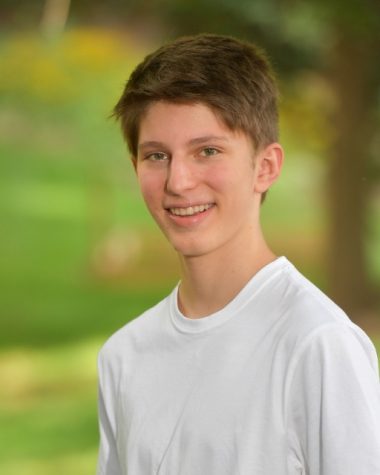Back in the spotlight
November 9, 2021
Immediately, sophomore Netanya Shaffin heard a difference in Harmoniah’s rehearsals. Whereas before each singer would listen to a specific track of their melody, now the different parts were overlaid on top of each other all at the same time. While this was more difficult than before, hearing the group sing together, in-person, was also more rewarding.
As CESJDS begins its first full year of in-person learning since 2018-2019, performance arts groups like Shir Madness, Harmoniah and the high school musical are all navigating this transition.
Performance arts persisted through the pandemic, but for many students, the experience was unnatural and difficult. Senior and Shir Madness member Will Sexter felt that the Zoom format didn’t completely work with the choir’s different melodies.
“When you’re virtual there isn’t much you can really do in rehearsals besides discuss logistics and answer questions,” Sexter said. “You can’t really sing over Zoom, it doesn’t really like multiple people talking at once.”
Musical performers at JDS had to spend almost a year and a half of their music careers in the online format, so re-adjusting to an in-person environment took some time. Even so, not everything learned over the course of the pandemic will be discarded now that performing arts has returned. Director of the Arts Dr. David Solomon sees this new environment as uniquely malleable.
“There were some really interesting skills learned in [the pandemic],” Solomon said. “And now, as we move back into live performances, we have to remember things that we did before, adapt those things to this hybrid world that we live in, and think if there are ways to integrate things that we learned during the course of online learning.”
As for adapting to remaining restrictions, all JDS performing arts groups still wear masks during rehearsals and performances. Additionally, Solomon plans on making sure the musical will be social distance-friendly, and is thinking about the best ways to do that as rehearsals are beginning.
“I can imagine we’re going to have to be conscious about how we choreograph numbers and block people on stage, and as we get closer, we’re going to have to think through what it means to have an audience as well.”
While Solomon is having conversations about how to navigate the upcoming musical, participants have already seen a difference in how performances feel. For Shaffin, the biggest noticeable difference is the size of the audience.
“Online, practically no one came to Kab Shab or Arts Chailights or any of those art-related events, so no one really saw our performances,” Shaffin said. “Now, if we do perform for Kab Shab, everyone will see it.”
While it might have been expected for the performing arts to slow down slightly, Solomon has seen just as much enthusiasm in the student body as ever.
“We had excellent attendance at auditions, so clearly there is a desire to have live performances once again. We have a very large group for ‘1776,’ involvement in Shir Madness and Harmoniah hit the ground running, and students have been volunteering to perform at Kab Shab,” Solomon said. “It’s very touching to see that enthusiasm amongst the students.”
In all facets of the JDS performance arts programs, students are appreciating the opportunity to sing, act and dance in person.
“When you’re in person you just get to see how the choir blends together,” Sexter said. “You get to work on presentation, because that’s something that we have to focus on now (how we stand, how we move, how we watch the conductor). It’s a whole different ball game.”








